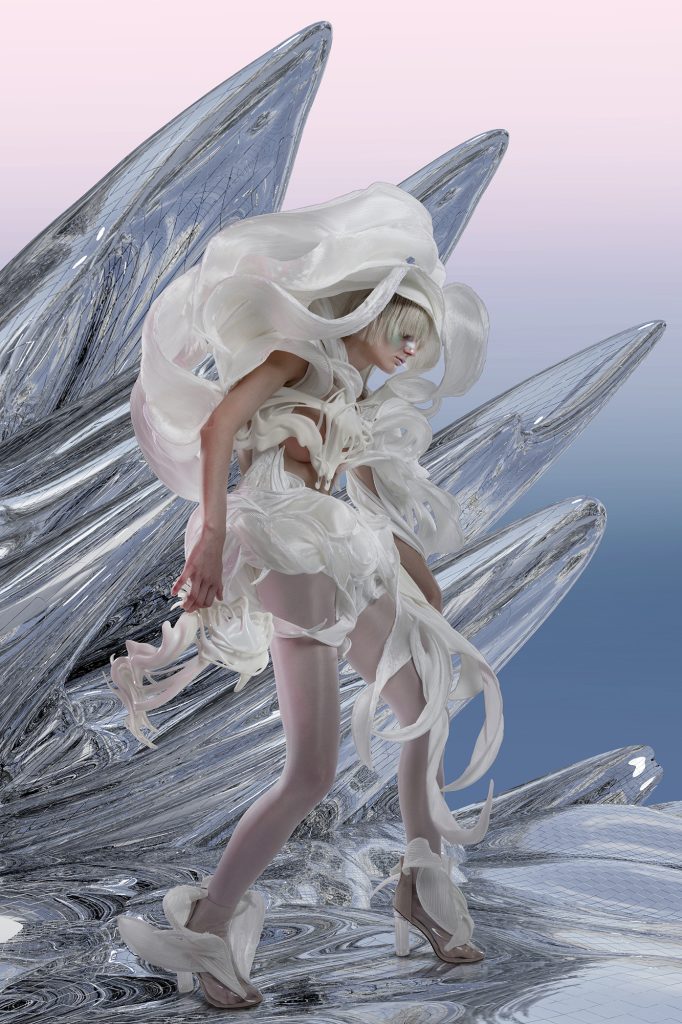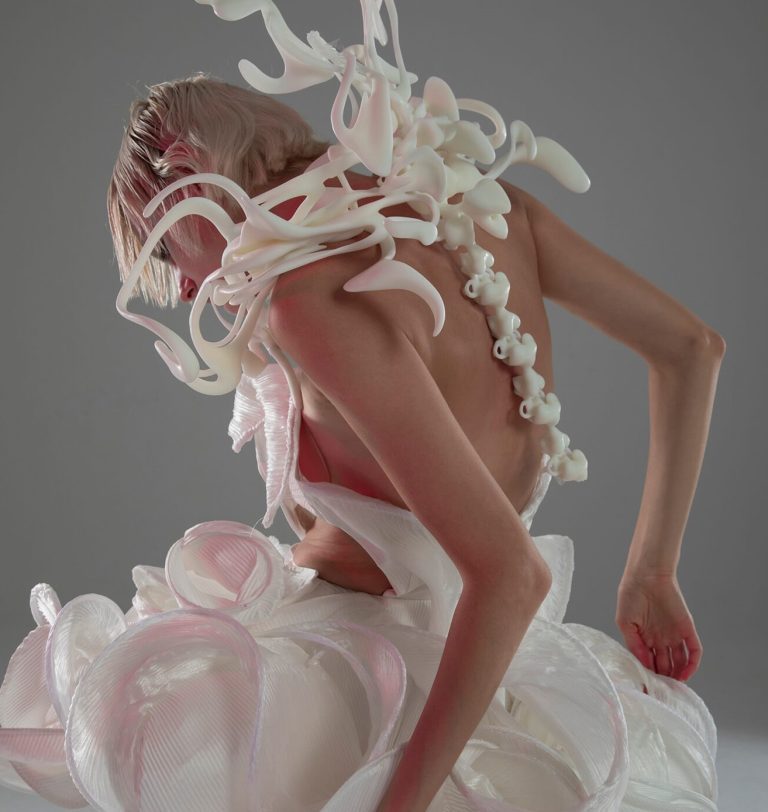In this exclusive interview with fashion designer Fanrui Sun, we explore the captivating journey of an artist whose creativity has been molded by a unique blend of experiences. From graduating with a focus on BA fashion design at LAFA University to obtaining a master’s degree from the esteemed Royal College of Arts, Sun’s diverse background lays the groundwork for her innovative work. Throughout our conversation, we delve into the profound impact of computer games on her artistic trajectory, uncover the influence of nature and organic forms, and discuss the delicate balance she strikes between traditional and digital art techniques.

hube: As a child you were fascinated by computer games. What emotions, memories or feelings from that time drive you now when you create your work?
Fanrui Sun: When I was a kid, I was really into matchmaking games like Dungeon Fighter and The King of Fighters, which were the first games to make me aware of the whole new universe that technology brought. Different character images, especially the distinctive clothing appearance. Buying equipment, props and clothing in games gave different looks and attributes to characters, but also brought about an early sense of clothing and identity that arose between players (a kind of society). These arise entirely in the digital world, which is like a simplified and diverse version of the real world, and it is fascinating for a child to have easy access to these unique looks. They made me, as a young child, envision my own digital identity and image.
h: Can you tell us about your background and how you got started in the world of design?
FS: I graduated from LAFA University, majoring in BA fashion design. And I graduated with my MA from the Royal College of Arts, majoring in digital wear. While art is a deeper perspective on reality, fashion has a deep history of its own, reflecting the popular culture of different periods, which contains a complex relationship between the body and concepts of appearance, identity, surface, space, society, etc. These relationships not only offer fashion a myriad of possibilities but also impose greater responsibilities and obligations. As the philosopher Wilson once said: when we wear clothes, our bodies are inscribed with an ambiguous relationship between art, personal psychology and social order. For me, as mentioned above, the aesthetics of fashion and the question of identity have been with me since I was a child, and by investigating the possibilities of fashion, I have been able to express myself through a unique perspective.
h: The digital world gives us freedom: from the laws of physics to the freedom to create. What elements of freedom are you missing in the real world?
FS: The digital world breaks through the limitations of physical time and space, so I am able to experiment with different materials and structures as I wish, but most of them are focused on the visual and auditory senses, and tactile sensation is one of the most important sensory experiences that we have, which is also missing in my digital work.

